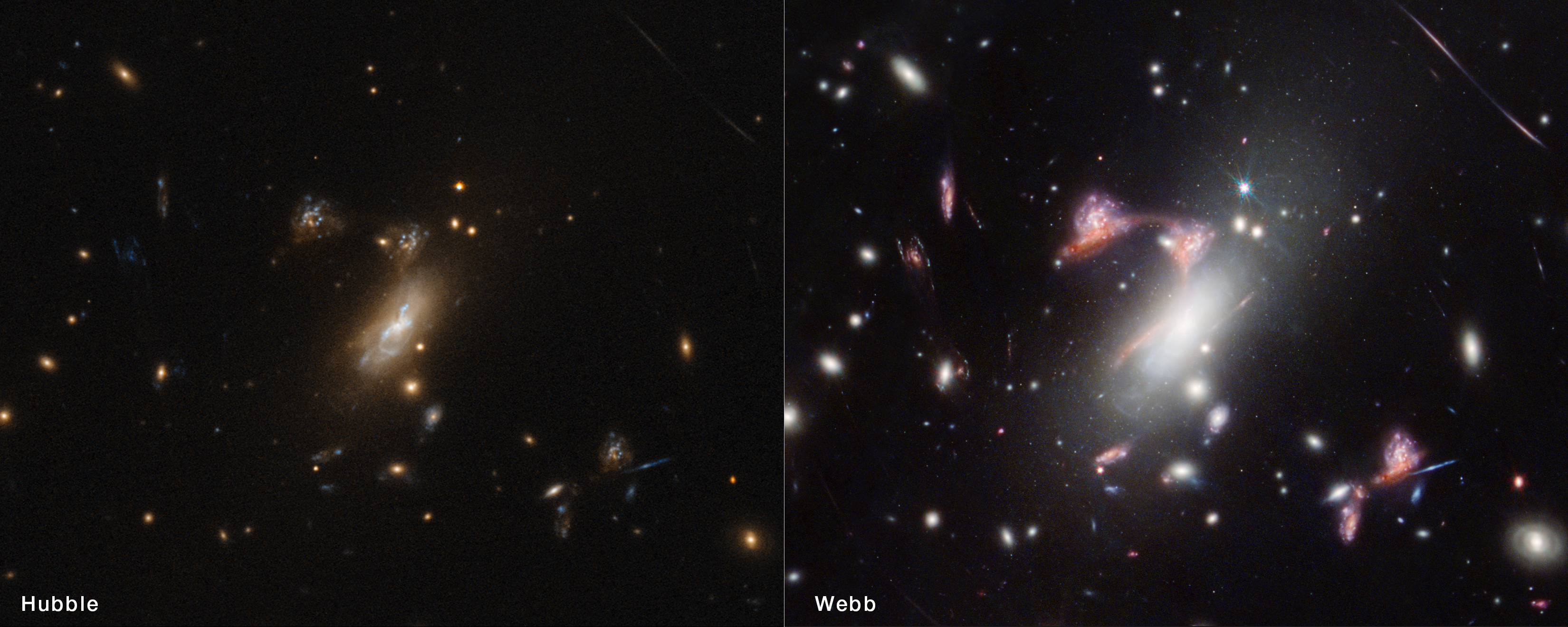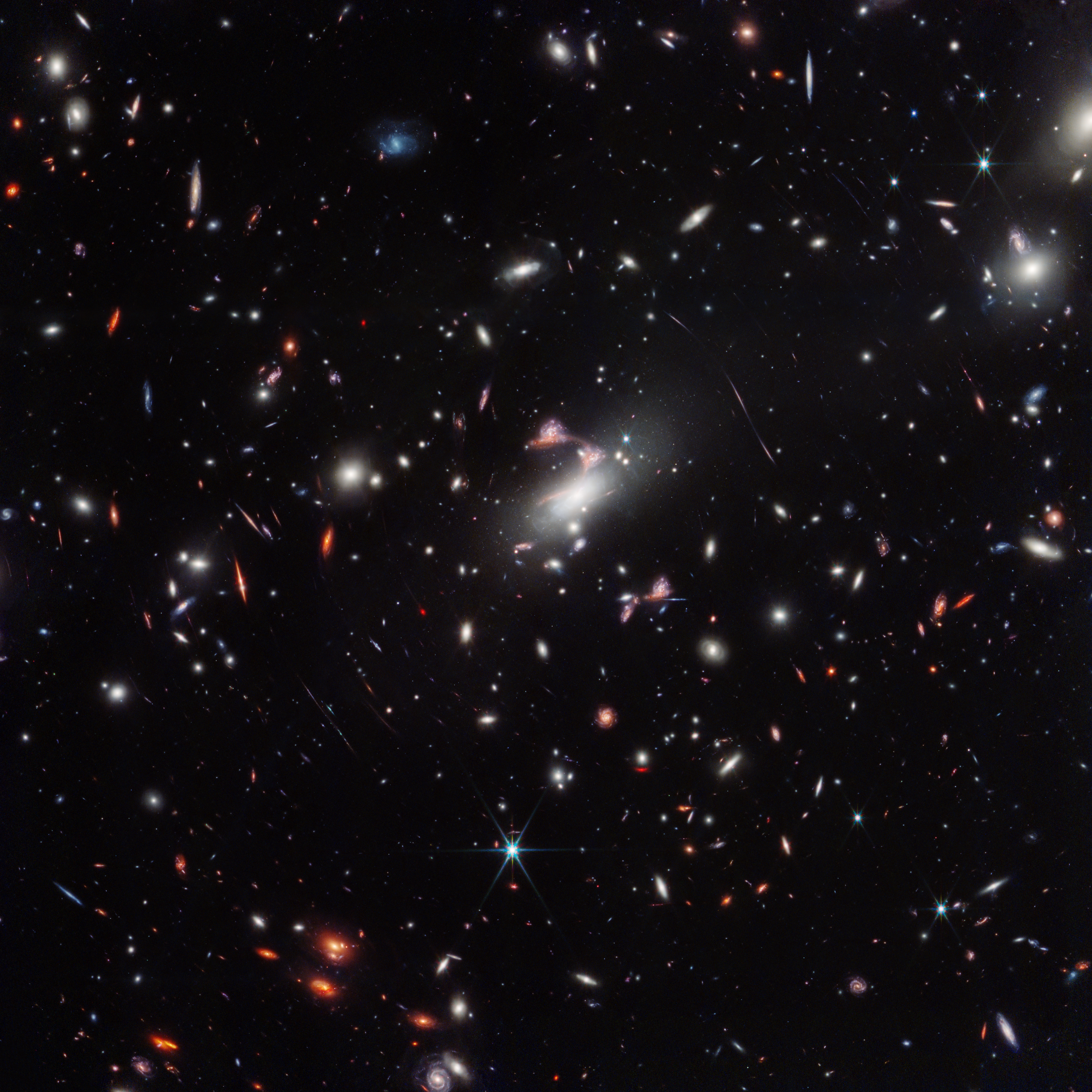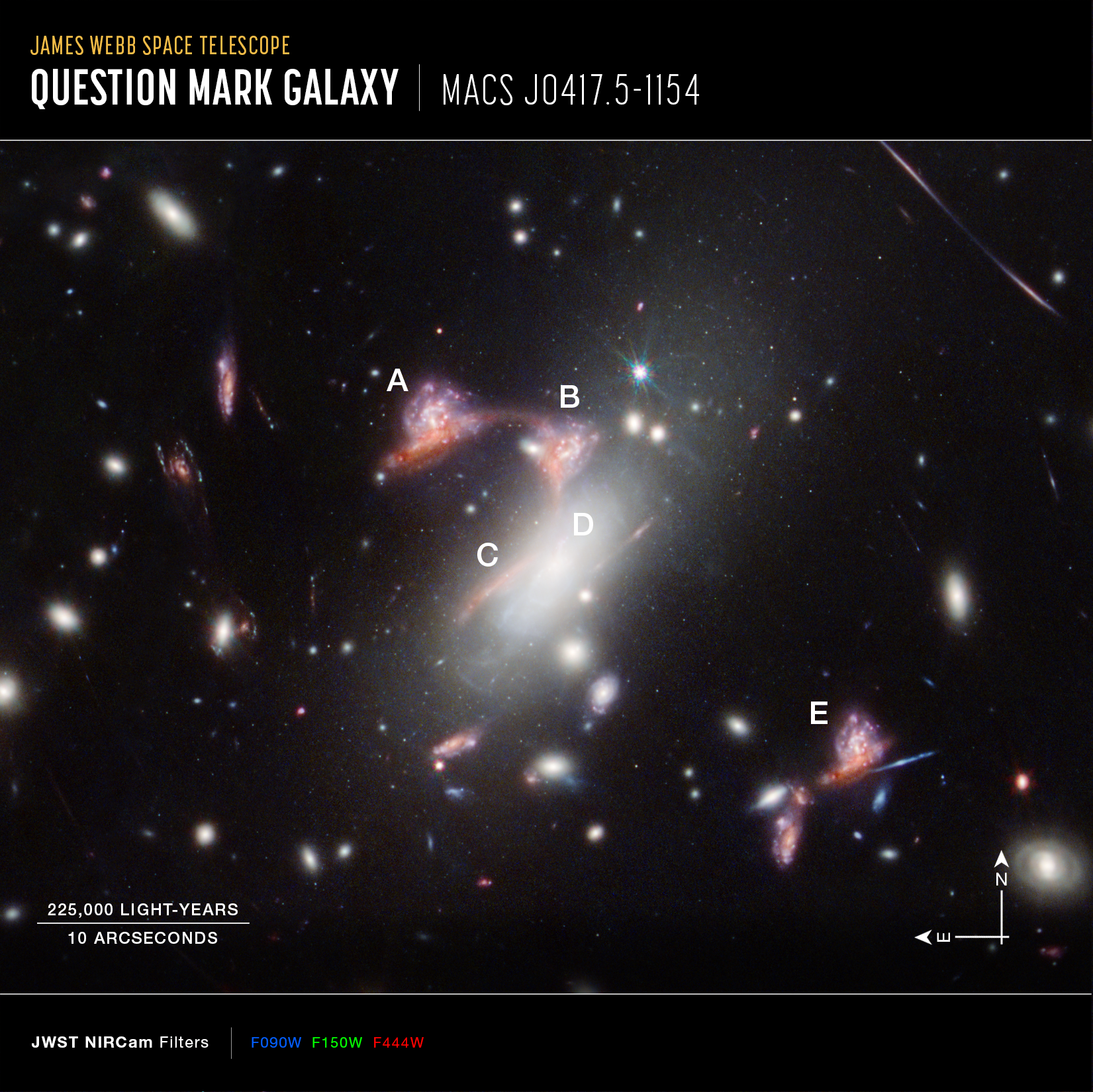1 min read
Question Mark Galaxy (Hubble and Webb Image)

NASA’s Hubble Space Telescope has also observed the galaxy cluster MACS-J0417.5-1154, but the dusty red galaxy that appears multiple times to form a question mark shape is much more prominent in the Webb image. The infrared light that Webb detects is better able to pass through the cosmic dust of its home galaxy to reach the telescope. Astronomers used Hubble’s ultraviolet observations to help determine where star formation is happening in both the red galaxy and its close companion, a face-on spiral galaxy.
About the Object
- R.A. PositionR.A. PositionRight ascension – analogous to longitude – is one component of an object's position.04:17:34.6
- Dec. PositionDec. PositionDeclination – analogous to latitude – is one component of an object's position.-11:54:32
- ConstellationConstellationOne of 88 recognized regions of the celestial sphere in which the object appears.Eridanus
- DistanceDistanceThe physical distance from Earth to the astronomical object. Distances within our solar system are usually measured in Astronomical Units (AU). Distances between stars are usually measured in light-years. Interstellar distances can also be measured in parsecs.4.65 billion light-years (z=0.441)
About the Data
- Data DescriptionData DescriptionProposal: A description of the observations, their scientific justification, and the links to the data available in the science archive.
Science Team: The astronomers who planned the observations and analyzed the data. "PI" refers to the Principal Investigator. - InstrumentInstrumentThe science instrument used to produce the data.Hubble: ACS; Webb: NIRCam
- FiltersFiltersThe camera filters that were used in the science observations.Hubble: F606W, F435W, F814W; Webb: F090W, F150W, F444W
- Object NameObject NameA name or catalog number that astronomers use to identify an astronomical object.Question Mark Galaxy in MACS J0417.5-1154
- Object DescriptionObject DescriptionThe type of astronomical object.Gravitationally lensed galaxy in galaxy cluster
- Release DateSeptember 4, 2024
- Science ReleaseNASA’s Webb Reveals Distorted Galaxy Forming Cosmic Question Mark
- CreditImage: NASA, ESA, CSA, STScI, Vicente Estrada-Carpenter (Saint Mary's University)

The Hubble image is a composite of separate exposures acquired by the ACS instrument on the Hubble Space Telescope. Several filters were used to sample various wavelength ranges. The color results from assigning different hues (colors) to each monochromatic (grayscale) image associated with an individual filter. In this case, the assigned colors are: Blue= F435W, Green=F606W, Red= F814W. Likewise, the Webb image is a composite of separate exposures acquired by the NIRCam instrument. The color results from assigning different hues (colors) to each monochromatic (grayscale) image associated with an individual filter. In this case, the assigned colors are: Blue: F090W Green: F150W Red: F444W
Related Images & Videos

Question Mark Galaxy (NIRCam Image)
The galaxy cluster MACS-J0417.5-1154 is so massive it is warping the fabric of space-time and distorting the appearance of galaxies behind it, an effect known as gravitational lensing. This natural phenomenon magnifies distant galaxies and can also make them appear in an image...

MACS J0417.5-1154 Wide Field (NIRCam Image)
A cosmic question mark appears amid a powerful gravitational lens in the James Webb Space Telescope’s wide-field view of the galaxy cluster MACS-J0417.5-1154. Gravitational lensing occurs when something is so massive, like this galaxy cluster, that it warps the fabric of...

Question Mark Galaxy, Annotated (NIRCam Compass Image)
A specific type of gravitational lensing known to astronomers as hyperbolic umbilic, captured in the James Webb Space Telescope’s image of galaxy cluster MACS-J0417.5, results in the optical illusion of five multiples of one distant galaxy pair, labeled here as A, B, C, D, and...
Share
Details
Laura Betz
NASA’s Goddard Space Flight Center
Greenbelt, Maryland
laura.e.betz@nasa.gov
NASA, ESA, CSA, STScI, Vicente Estrada-Carpenter (Saint Mary’s University)






























